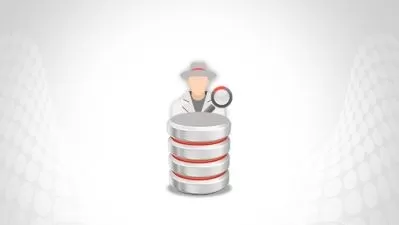Oracle Database and ELK Stack – Let’s do Data Visualization
Mayank Singh
1:13:39
Description
Visualize Oracle Database using Elasticsearch, Kibana and Logstash. Hands-On Training
What You'll Learn?
- Configuring ELK Stack from the beginning
- AWS RDS for Oracle
- GCP Compute Engine Service
- Logstash Configuration File
- Oracle DB connectivity using Logstash
- Data Visualization using Kibana
- Oracle HR schema data Visualization
Who is this for?
What You Need to Know?
More details
Description
In today's data-driven world, businesses generate vast amounts of data from various sources, including relational databases. To make sense of this data and gain valuable insights, organizations often turn to powerful tools like Elasticsearch, which provides advanced search and analytics capabilities. By deploying Elasticsearch alongside existing relational databases, businesses can leverage its strengths in indexing and querying data, allowing for faster and more efficient searches and analysis.
The key challenge lies in keeping Elasticsearch in sync with the data stored in the associated relational database. Changes made to the database need to be reflected in Elasticsearch to ensure the visualizations and dashboards created in Kibana remain up-to-date and accurate. This synchronization process can be achieved through various methods, such as using log-based or change data capture (CDC) mechanisms, where changes in the database are monitored and replicated to Elasticsearch.
This course will take participants on a comprehensive journey, starting from scratch, to visualize RDBMS data using the ELK (Elasticsearch, Logstash, Kibana) stack. The course will showcase how Elasticsearch can be utilized not only for logging and monitoring purposes but also as a powerful tool for visualizing and analyzing data from traditional databases.
Moreover, the course will demonstrate the use of various cloud platforms, including AWS RDS (Amazon Web Services Relational Database Service), GCP Compute Engine (Google Cloud Platform), and AWS S3 (Amazon Simple Storage Service). Leveraging cloud services will provide learners with practical experience in working with data across different cloud environments and integrating these services with the ELK stack.
Throughout the sessions, participants will gain hands-on experience in setting up and configuring Elasticsearch, Logstash, and Kibana, and will be introduced to the concepts of index patterns, visualizations, and dashboards in Kibana. They will learn how to connect the ELK stack with the relational database and ensure real-time synchronization.
By the end of the course, learners will have a solid understanding of how to use the ELK stack to transform raw RDBMS data into meaningful and visually appealing insights. This newfound knowledge will empower them to make informed business decisions, identify patterns, trends, and anomalies, and drive innovation through data-driven strategies.
Who this course is for:
- Software Developers
- Data analyst
- BSA
- Managers
In today's data-driven world, businesses generate vast amounts of data from various sources, including relational databases. To make sense of this data and gain valuable insights, organizations often turn to powerful tools like Elasticsearch, which provides advanced search and analytics capabilities. By deploying Elasticsearch alongside existing relational databases, businesses can leverage its strengths in indexing and querying data, allowing for faster and more efficient searches and analysis.
The key challenge lies in keeping Elasticsearch in sync with the data stored in the associated relational database. Changes made to the database need to be reflected in Elasticsearch to ensure the visualizations and dashboards created in Kibana remain up-to-date and accurate. This synchronization process can be achieved through various methods, such as using log-based or change data capture (CDC) mechanisms, where changes in the database are monitored and replicated to Elasticsearch.
This course will take participants on a comprehensive journey, starting from scratch, to visualize RDBMS data using the ELK (Elasticsearch, Logstash, Kibana) stack. The course will showcase how Elasticsearch can be utilized not only for logging and monitoring purposes but also as a powerful tool for visualizing and analyzing data from traditional databases.
Moreover, the course will demonstrate the use of various cloud platforms, including AWS RDS (Amazon Web Services Relational Database Service), GCP Compute Engine (Google Cloud Platform), and AWS S3 (Amazon Simple Storage Service). Leveraging cloud services will provide learners with practical experience in working with data across different cloud environments and integrating these services with the ELK stack.
Throughout the sessions, participants will gain hands-on experience in setting up and configuring Elasticsearch, Logstash, and Kibana, and will be introduced to the concepts of index patterns, visualizations, and dashboards in Kibana. They will learn how to connect the ELK stack with the relational database and ensure real-time synchronization.
By the end of the course, learners will have a solid understanding of how to use the ELK stack to transform raw RDBMS data into meaningful and visually appealing insights. This newfound knowledge will empower them to make informed business decisions, identify patterns, trends, and anomalies, and drive innovation through data-driven strategies.
Who this course is for:
- Software Developers
- Data analyst
- BSA
- Managers
User Reviews
Rating
Mayank Singh
Instructor's Courses
Udemy
View courses Udemy- language english
- Training sessions 11
- duration 1:13:39
- Release Date 2023/09/10
















